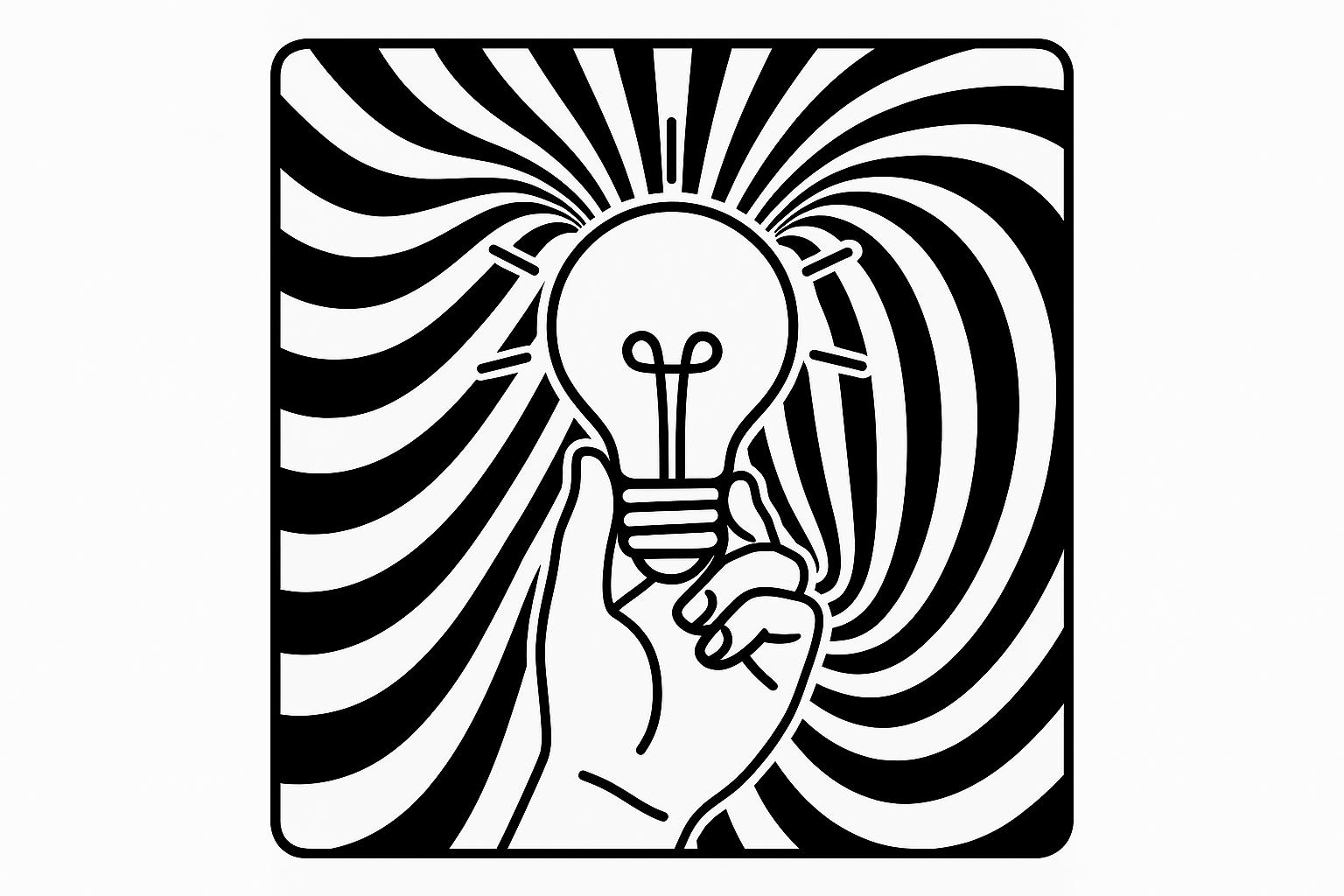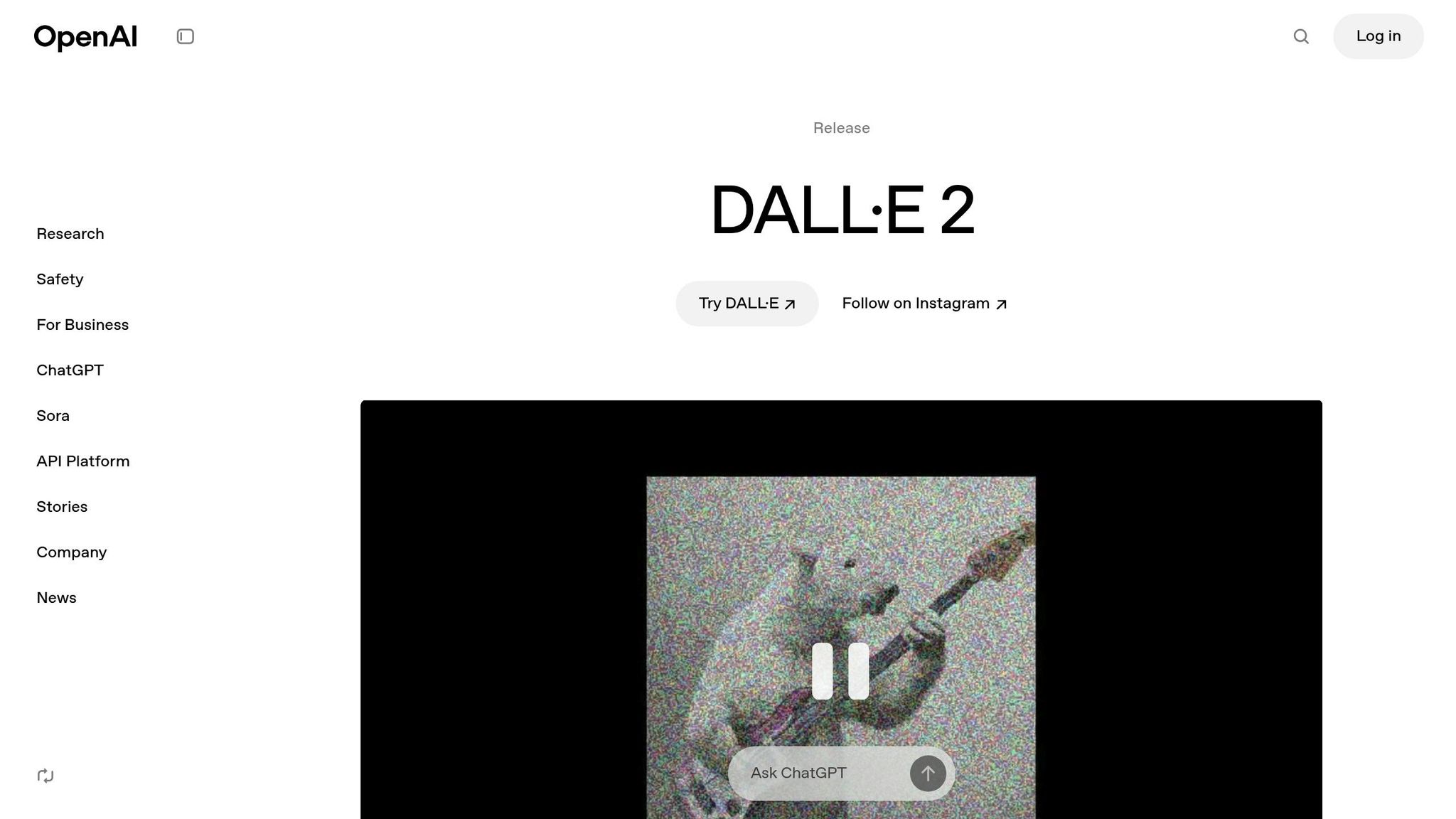
When it comes to online shopping, the right image can make or break a sale. AI-generated visuals are transforming e-commerce by delivering high-quality, eye-catching product images that drive customer engagement and boost conversions. Here's what you need to know:
The secret lies in crafting detailed, specific prompts that guide AI tools to produce images that not only look good but also sell products effectively.
Creating effective AI prompts starts with clearly conveying your vision. Nail down these basics, and you’ll be on your way to generating product images that grab attention and drive sales.
A strong AI image prompt provides clear, concise instructions for generating sales-focused visuals. Akshita Sharma, Content Marketing Associate, explains it best: "An AI image prompt is a brief set of guidelines that describes the creative you want the AI to generate. The more detailed your description, the easier it is to capture the specific elements you require in the AI-generated image."
For a prompt to work effectively, it should include four main elements: image type, product details (like color, texture, size, and features), emotional appeal, and context. But for commercial use, you’ll want to go beyond just these basics.
Product details are the backbone of your prompt. Be as specific as possible when describing your product. For instance, instead of saying "red sneaker", try something like "bright crimson athletic running shoe with white mesh panels and reflective silver accents." This level of detail ensures the AI understands exactly what needs to stand out.
Emotional appeal is where a simple product image turns into a visual that resonates. Think about the feelings you want your product to evoke. For example, a cozy blanket could be described as "soft, inviting wool throw draped casually over a comfortable reading chair, creating a sense of warmth and relaxation." This emotional connection can make your product more appealing to potential buyers.
Context and environment are equally important. Placing your product in a relatable setting makes it easier for customers to imagine it in their own lives. A kitchen gadget, for instance, would look more appealing "on a clean marble countertop surrounded by fresh ingredients" rather than floating in an empty void. Contextual details create a sense of realism that enhances the product’s appeal.
Additionally, prompts should include specifics about lighting, color, mood, and composition. These elements should align with your brand's tone - whether it’s playful for toys, elegant for luxury goods, or high-energy for fitness products.
Next, let’s dive into how the structure and length of your prompts fine-tune the AI’s output.
Once you’ve nailed the core elements, the way you structure and lengthen your prompts can make all the difference. A clear, detailed prompt ensures the AI generates accurate and visually appealing results, while vague instructions often lead to disappointing outcomes.
Specificity is key because it reduces guesswork for the AI. The more precise you are, the better the output. This is especially important for marketing visuals, where every detail needs to serve a purpose. Here’s an example to illustrate the difference:
The second version leaves no room for misinterpretation, guiding the AI to deliver exactly what you need.
Prompt length also matters, but it’s not about writing more - it’s about writing better. Start by focusing on the product and its standout features, then layer in environmental and stylistic details. Quality always outweighs quantity.
Your prompt should flow naturally, almost like you’re describing the scene to a friend. Focus on what you want to see, not what you don’t want. Avoid using negative phrasing, as it can confuse the AI and lead to less precise results.
Finally, remember that iteration and refinement are part of the process. Begin with a solid, well-thought-out prompt, then tweak it based on the AI’s output. Every word you include has an impact, so take the time to refine your prompts until the images align with your vision and effectively engage your audience.
Building on the basics of AI prompt creation, this guide walks you through crafting detailed prompts that generate high-quality product visuals. Follow these steps to consistently create prompts that deliver attention-grabbing, sales-driving images.
A well-crafted prompt relies on key components that work together to produce compelling product visuals. Here's how to structure these elements for maximum impact:
Product description serves as the backbone of your prompt. Be precise and descriptive about the product's features - include details like size, color, texture, materials, and unique selling points. For example, instead of simply saying "wireless headphones", describe them as "sleek matte black wireless over-ear headphones with rose gold accents and soft leather padding."
Scene and environment provide context, helping customers imagine the product in real-world scenarios. Specify details like location, surroundings, background, and the overall mood. For instance, placing a product in a cozy living room or a modern office can make it more relatable to your audience.
Lighting specifications set the tone of the image. Whether it's warm, natural light for a cozy vibe or bright, professional lighting for a polished look, the lighting choices significantly influence the image's feel. For example, "soft morning light through a window" creates a calming mood, while "bright studio lighting" emphasizes clarity and quality.
Branding elements and emotional tone should align with your brand's identity. Whether you're aiming for a luxurious, comforting, or energetic vibe, make sure to specify the emotional tone and branding details that reflect your product's story.
Once you’ve defined these components, refine your prompt with clear, actionable instructions.
Clarity is key when writing prompts. Direct, specific language ensures the AI understands your vision and produces an image that meets your expectations.
Start with action-oriented language to guide the AI. Words like "showcase", "highlight", or "feature prominently" help direct focus to the most important elements of your product.
Use vivid, descriptive terms to provide details about size, color, mood, and other important aspects. For example, instead of saying "nice lighting", specify "soft, diffused natural light filtering through a large window."
Organizing your prompts in a structured format also helps the AI prioritize your vision. Begin with the main elements, then add supporting details to ensure the final image aligns with your expectations.
Don't forget to include exclusion guidelines. Clearly state what the AI should avoid to keep the image on-brand. For example:
"Create a product description for our premium eco-friendly sneakers. Emphasize sustainability and durability, but avoid terms like 'cheap' or 'affordable.' Focus on highlighting quality and long-term value."
Let’s see how these principles come together in a practical example.
Here’s how you can create a detailed prompt for a premium aromatherapy candle:
Start with the product foundation:
"Professional photo of a luxury soy wax aromatherapy candle in a matte black ceramic vessel with a gold rim, measuring 4″ tall by 3″ wide."
Add environmental context:
Choose a setting that resonates with your target audience. For example:
"Professional photo of the candle placed on a wooden platter on a table near a window with a scenic outdoor view."
Incorporate lighting and mood specifications:
"Warm golden hour sunlight streams through sheer curtains, creating soft shadows that highlight the candle's texture and premium materials. The atmosphere is calm and spa-like."
Include branding and emotional elements:
"The setting evokes a sense of luxury and relaxation. Nearby objects might include a cashmere throw, fresh eucalyptus sprigs, and a leather-bound journal in muted tones like cream, sage green, and warm gray."
Complete prompt:
"Professional photo of a luxury soy wax aromatherapy candle in a matte black ceramic vessel with a gold rim, measuring 4″ tall by 3″ wide, placed on an oak tray on a minimalist bedside table. Warm golden hour sunlight streams through sheer linen curtains, casting soft shadows that highlight the candle's premium texture. The scene includes a cashmere throw draped nearby, fresh eucalyptus sprigs, and a leather-bound journal in neutral tones of cream, sage green, and warm gray. The atmosphere is serene and spa-like, evoking a sense of luxury self-care and mindful relaxation. High-resolution, magazine-quality lighting with a shallow depth of field."
This example shows how each part of the prompt builds upon the others, creating a clear, cohesive vision. By being specific and detailed, you give the AI the tools it needs to produce a polished, appealing image that aligns with your brand's goals.
Picking the right AI tool can make all the difference in your product image strategy. While both Midjourney and DALL-E excel at creating stunning visuals, each offers unique advantages tailored to different marketing needs.
The AI-powered design tools market is booming, with projections estimating a rise from $5.54 billion in 2024 to $40.15 billion by 2034, growing at an annual rate of 21.67% from 2029 to 2034. This growth highlights how businesses are increasingly turning to AI to create visuals that not only grab attention but also convert viewers into customers. Below, we break down the strengths of Midjourney and DALL-E to help you decide which tool best suits your goals.

Midjourney stands out for its ability to produce artistic, hyper-realistic product images. Its visuals are rich in texture and lighting, giving products a premium and highly desirable look. Rated 4.4 out of 5 on G2, with 89% of users expressing satisfaction with its results, Midjourney is a go-to for creating images that evoke emotion and leave a lasting impression.
The platform offers extensive customization through style parameters and aspect ratio settings, allowing you to fine-tune details like lighting and artistic style. This level of control makes it ideal for brands aiming to establish a specific mood or aesthetic. Its consistency in delivering professional-grade images also makes it a reliable choice for businesses running multiple campaigns. However, it’s worth noting that Midjourney requires a subscription (starting at $10 per month) and has a steeper learning curve compared to some other tools.
Midjourney is particularly effective for marketing products that benefit from emotional storytelling and visual impact. Think fashion, home décor, premium electronics, or artisanal goods - items that shine when presented with cinematic flair and intricate detail.

DALL-E, on the other hand, focuses on precision and ease of use. It excels at following text prompts to create accurate and specific product visuals, making it a strong choice for straightforward presentations.
Beyond precision, DALL-E can craft emotionally engaging scenarios around your products. Whether it’s showing people using your items, placing them in seasonal settings, or designing unique backgrounds that tell a story, DALL-E helps customers visualize themselves interacting with your products. This makes it a great tool for lifestyle images that connect with audiences on a personal level.
Ease of use is one of DALL-E’s standout features. Users rate it 90% for ease of use, compared to Midjourney’s 83%. You can access DALL-E for free through Microsoft’s Bing Image Creator or Copilot, with paid options starting at $0.040 per standard image or $20 per month for ChatGPT Plus. Additionally, its editing tools, like inpainting, allow you to modify specific parts of an image without needing to regenerate the entire visual.
DALL-E’s clean and grounded style is perfect for products that require clarity and professionalism, such as tech gadgets, everyday consumer goods, and items aimed at broader audiences. It’s especially useful for creating product catalogs, social media content, and other marketing materials where speed and accuracy are key.
For a well-rounded strategy, many businesses combine the strengths of both tools. Midjourney’s emotive visuals are perfect for hero images and storytelling, while DALL-E’s precision and speed make it ideal for catalog shots and quick-turnaround content. Together, they allow brands to balance artistic storytelling with clear product presentation, meeting a wide range of marketing needs effectively.

Once you’ve got the hang of structuring prompts, the next step is using a platform that’s designed to make the process easier. Creating precise AI prompts for product images can be a time-consuming task. That’s where God of Prompt comes in - it simplifies the process, helping marketers and business owners generate high-quality, conversion-focused visuals quickly. With a stellar rating of 4.8/5 from 743 reviews and trusted by over 30,000 business owners, this platform has become a go-to tool for AI-driven marketing success. By turning the often-complex task of prompt creation into a smooth and efficient workflow, God of Prompt saves time and effort. Let’s dive into the features that make it a game-changer for marketers and small businesses.
God of Prompt is built to streamline visual content creation, offering tools specifically tailored for marketing and business needs. The platform boasts a library of over 30,000 AI prompts, neatly categorized for marketing, business, copywriting, and visual content creation. This means you don’t have to start from scratch - just tap into proven prompt templates designed for maximum impact. Whether you’re using ChatGPT or Midjourney, God of Prompt has you covered with dedicated collections for both tools. For product images, these prompts are organized by visual style, making it easy to find exactly what you need. The library is hosted in an intuitive Notion format, so navigation is a breeze.
But it doesn’t stop there. The platform also includes step-by-step guides to help you craft visuals that resonate with your audience. These guides walk you through everything - from basic prompt-building techniques to more advanced strategies tailored to U.S. consumer preferences. Plus, with unlimited updates, your prompt library stays aligned with the latest AI advancements and marketing trends.
God of Prompt isn’t just a repository of prompts - it actively boosts your efficiency. By using its curated resources, users report saving up to 20 hours per week that would’ve been spent developing prompts from scratch. For example, in June 2023, Guiying Juan from @anxsolutions shared how God Mode Chat GPT prompts helped improve her website’s SEO. By identifying effective keywords and incorporating them into her content, she saw a noticeable increase in search engine visibility.
The platform’s ease of use is another highlight. Lyndi Betony of @lynd_bet_pro shared her experience, saying:
"It is so easy to use that it almost feels like a no brainer... I highly recommend God Mode Bible to anyone looking for a great tool to help them be more productive."
Similarly, Lucas Kendall noted a significant boost in his team’s productivity after adopting God of Prompt:
"I bought this and I must say it is worth every penny. My team's output has drastically increased. Highly recommended."
For businesses on tight budgets, God of Prompt delivers incredible value. Users have described it as offering "so much value for so little cost". With a lifetime access model and high-priority support, it’s an investment that grows alongside your business, ensuring you always have the tools you need to succeed.
Creating product images that connect with American consumers takes more than just attractive visuals - it demands an understanding of their cultural values and everyday experiences. When AI-generated images align with the visual language familiar to your audience, they create an emotional bond that can translate into stronger sales. The key is to move beyond generic product shots and craft visuals that feel authentically American, resonating with the lifestyles and preferences of US shoppers.
US consumers often respond to imagery that reflects their local environment, cultural touchpoints, and relatable scenarios. Take Heinz, for example: they used DALL-E 2 to create their "AI Ketchup" campaign by prompting the AI with phrases like "ketchup in outer space." The resulting visuals consistently resembled Heinz bottles, reinforcing their brand as the go-to ketchup in the minds of consumers through both social media and print ads. This is a great example of how aligning visuals with cultural context can make a lasting impression.
Adding localized details is one of the most effective ways to make AI-generated images feel relevant. Start by ensuring that the basics, like currency and measurements, match US standards. For example, replace "50 euros" with "$49.99", as American shoppers are accustomed to seeing dollar signs and pricing that ends in .99.
Measurements are another area where localization matters. Americans use inches, feet, and pounds, so a prompt for furniture might say "comfortable 6-foot sofa in modern living room" instead of "180cm sofa." Similarly, for fitness equipment, "5-pound dumbbell set" feels more familiar than "2.3kg weights." These small adjustments help build trust and make the visuals feel tailored to the audience.
Cultural scenarios add another layer of connection. Instead of generic settings, include distinctly American ones in your prompts. For instance, describe a "family barbecue in a suburban backyard with a white picket fence", a "college dorm room with a twin XL bed and mini-fridge", or a "Thanksgiving dinner table." These details anchor the product in a context that feels relatable to US consumers.
Seasonal and regional variations also enhance authenticity. A winter clothing prompt might specify "cozy sweater perfect for New England winters", while a summer product could call for "lightweight jacket for California evenings." Food-related prompts can reference cultural moments like a "Fourth of July picnic spread", creating emotional ties that resonate with shoppers.
American consumers are drawn to visuals that mirror their own surroundings and routines. To achieve this, your prompts should describe recognizable locations, such as suburban driveways, bustling downtown coffee shops, or college campuses. These familiar backdrops help showcase how your product fits seamlessly into the American lifestyle.
Holidays and seasonal themes offer another opportunity to connect. AI-generated images can evoke emotions like nostalgia or excitement while reflecting the significance of specific holidays. For example, a Christmas-themed prompt might describe a "cozy living room with a stone fireplace and Christmas tree, with wrapped presents underneath." For summer products, you could specify a "backyard pool party with string lights and patio furniture."
Regional details can also make a difference. A prompt for outdoor gear might highlight a "hiking trail in the Rocky Mountains" for western audiences or "autumn foliage in Vermont" for eastern markets. Food-related visuals might feature a "Texas BBQ setup" or a "California farmers market display." These geographic cues allow consumers to envision the product in their own corner of the country.
Adding architectural and design elements can further enhance the connection. For instance, American homes often feature open-concept kitchens with granite countertops and stainless steel appliances, or master bedrooms with walk-in closets and ensuite bathrooms. Including these details in your prompts makes the visuals feel more aligned with typical American preferences.
Coca-Cola’s "Create Real Magic" campaign provides a great example of balancing global branding with local appeal. By offering digital assets and an AI engine, the campaign empowered fans worldwide to create Coke-inspired art while preserving iconic brand elements. This approach ensured the visuals stayed true to the brand while allowing for cultural customization.
The ultimate goal is to make American consumers feel like the product was designed with them in mind. When AI-generated visuals reflect familiar settings, cultural moments, and local preferences, they elevate from being simple product images to becoming powerful tools that drive engagement and sales. By incorporating these US-specific elements into your prompts, you can create visuals that truly resonate with your audience.
To create product images that truly drive sales, focus on crafting precise prompts, choosing the right tools, and tailoring your visuals to resonate with your audience. Here’s how to make it happen:
Start by being specific in your prompts. Clearly describe your vision, including details like colors, textures, and settings. The most essential details - like the type of image and its subject - should come first, as AI systems prioritize the initial words of a prompt. For example, instead of saying "a nice product photo", try something like "a sleek black leather wallet on a neutral white background."
Structure your prompts using three key elements: Goal, Context, and Persona. This framework ensures the AI understands what you want to create, why it matters, and who it’s for. When working on product photography, stick to neutral backgrounds to keep the focus on the product. Use soft, diffused lighting to avoid harsh reflections, and maintain consistent angles and composition to uphold brand uniformity.
Choosing the right AI tools is equally important. Look for platforms that align with your brand’s aesthetic and goals. Tools like "God of Prompt" provide templates and guides to help you refine your prompts effectively.
Localization is another critical factor. Tailor your images for your target market. For example, when targeting US customers, use familiar cues like dollar pricing (e.g., $49.99), imperial measurements (e.g., "6-foot sofa"), and relatable settings such as a backyard barbecue or a college dorm room. Campaigns that integrate local market insights can outperform purely AI-generated campaigns by up to 40%.
Don’t overlook the power of human elements and real-life scenarios. Including people in your product images helps showcase how the product fits into everyday life, making it more relatable. Adding dynamic effects, like motion blur or strategic lighting, can inject energy into your visuals while keeping the focus on the product.
Finally, ensure your images maintain brand consistency. A unified color scheme, typography, and layout build trust and recognition, which are crucial for converting viewers into buyers. By integrating these strategies, you’ll create a cohesive image strategy that not only looks great but also drives sales.
To create AI-generated product images that connect with US consumers, focus on prompts that emphasize emotional connection, branding, and real-life relevance. The images should reflect aspects of American life, including familiar settings, diverse representation, and relatable situations that resonate with a wide audience.
When crafting your prompts, be clear and specific about product details. Mention dimensions in imperial units (like inches or pounds), list prices in US dollars (e.g., $19.99), and highlight features that demonstrate the product's value. It's important to create visuals that feel authentic and credible, as this builds trust and encourages consumer engagement.
Midjourney excels at creating artistic, mood-driven visuals that bring a sense of creativity and emotion to the forefront. This makes it an excellent choice for showcasing products in a more abstract or imaginative style, perfect for capturing attention and sparking curiosity.
On the flip side, DALL-E shines when it comes to realistic, detailed renderings. If you need precise, structured product images where accuracy and clarity are essential, DALL-E is your go-to tool.
In short, opt for Midjourney to emphasize creativity and emotion, and turn to DALL-E for polished, lifelike representations with a focus on detail and professionalism.
A thoughtfully written AI prompt can dramatically enhance the quality of product images by offering clear, detailed guidance. This clarity minimizes confusion, ensuring the AI hones in on the specific details you’re after - whether it’s the composition, style, color palette, or overall context.
When you outline key aspects - like the environment where the product is showcased, the intended audience, or the emotional vibe you want to convey - you give the AI a roadmap to produce visuals that are not just accurate but also captivating and aligned with your marketing objectives. Simply put, the more specific your prompt, the better the AI can create images that connect with your audience and elevate your product’s visual appeal.





